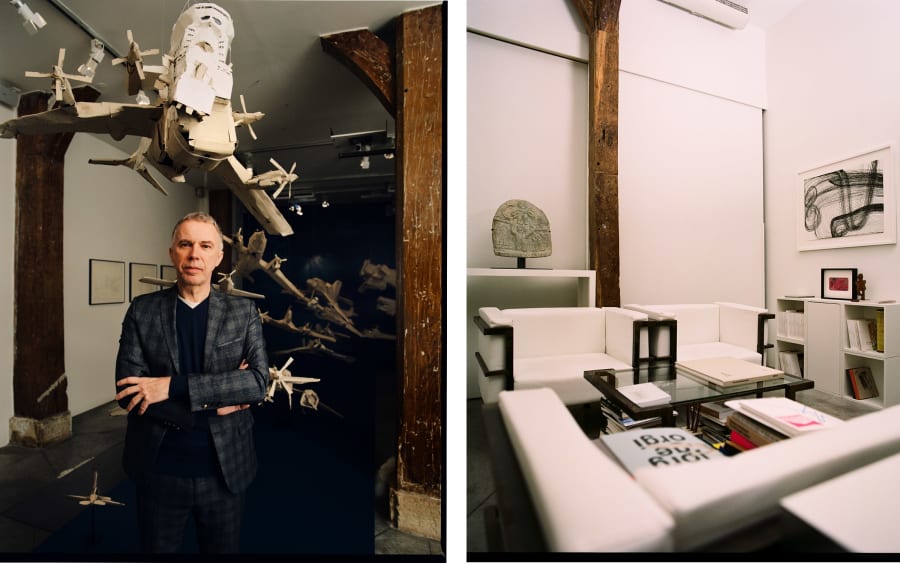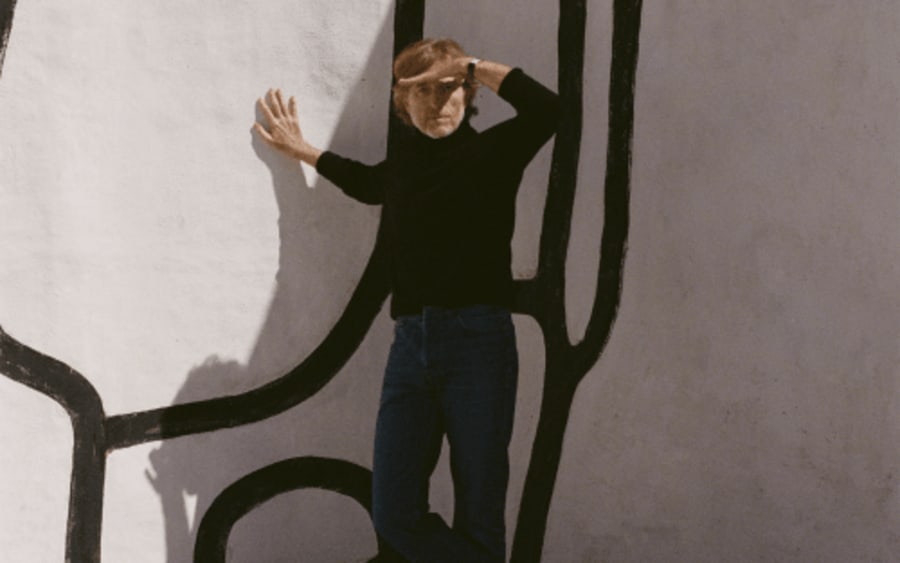A new addition to Art Basel Paris for 2024, the Premise sector showcases nine highly singular, curated presentations that defy boundaries and challenge norms. This year’s selection brings together a dynamic mix of artists who explore the complexities of identity, power, and resistance. From reexamining the role of fashion in oppression to dismantling societal conventions through underground comics, these five standout presentations exemplify how art can nudge its elbows into the sides of society, clearing a path for fresh ideas to emerge.
Nazario (b. 1944, Spain)
Presented by Bombon (Barcelona)
A trans detective in stilettos, Anarcoma was no ordinary comic book heroine when she made her debut on the underground publishing scene in the 1970s. Spanish artist Nazario created this anarchist comic figure during Spain’s post-Franco democratic transition, using unapologetically raunchy visuals to shatter the traditional mold of crime noir. Anarcoma’s bold presence not only gave voice to the LGBTI+ community but also reached a broader audience unfamiliar with trans identity, sparking vital conversations about gender, sexuality, and freedom. At Bombon’s booth, original drawings from the comic offer a rare, tangible glimpse into this groundbreaking work, illuminating its role in reshaping both underground art and social discourse in Spain during a pivotal moment in the country’s history.
Wally Hedrick (1928–2003, USA)
Presented by Parker Gallery (Los Angeles)
Wally Hedrick’s ‘Black Paintings’ don’t just hang on a wall – they protest. Rooted in his growing disillusionment with US military interventions, these stark canvases became Hedrick’s silent rebellion. A veteran himself, Hedrick started covering his older works in thick layers of black oil paint in 1957, erasing his creations to symbolize his withdrawal from the toxic structures of society. The act of negation became a powerful form of protest – mourning the endless cycles of violence while resisting complicity. Over decades, Hedrick continued ‘blacking out’ his paintings, sometimes layering black upon black, reflecting an ever-growing despair over war. His works in Parker Gallery’s booth stand as a testament to the enduring power of protest, expressed not with words, but with silence and shadow.
Chico Tabibuia (1936–2007, Brazil) and Tomie Ohtake (1913–2015, Japan)
Presented by Nara Roesler (São Paulo, New York, Rio de Janeiro)
At first glance, the works of Chico Tabibuia and Tomie Ohtake might seem like an unlikely pairing, but the two Brazilian artists find a striking harmony in their shared focus on organic forms. Ohtake’s abstract paintings, steeped in Zen philosophy and Japanese traditions, convey a sense of serene contemplation, while Tabibuia’s visceral, sculptural works draw on the spiritual energy of his Afro-Brazilian heritage. Ohtake’s fluid shapes hover between reality and dream, while Tabibuia’s primal, fragmented figures channel ancient African symbols. Together in Nara Roesler’s booth, these works create a powerful dialogue between the spiritual and material worlds, offering a nuanced vision of Modernism deeply informed by non-Western traditions and perspectives.
Nil Yalter (b. 1938, Türkiye)
Presented by The Pill (Istanbul)
The connection between beauty and brutality can be disturbingly close. In Nil Yalter’s The AmbassaDRESS (1978), power, privilege, and fashion intertwine to explore this unsettling dynamic. The multimedia installation traces the semi-fictional story of an ambassador’s wife who danced with Nazi officials during World War II while wearing a 1928 Lanvin haute couture gown. For Yalter, the dress is a potent symbol of privilege and willful ignorance in the face of atrocity. Through archival materials, video, photographs, and drawings, Yalter examines how the elite distanced themselves from the violence surrounding them. By blending historical fact and fiction, she reveals how power operates – subtly or overtly – through cultural symbols like fashion, while questioning the role of art and design in sustaining oppressive systems and defining truth.
Gerhard Richter (b. 1932, Germany) and Sigmar Polke (1941–2010, Poland)
Presented by Sies + Höke (Düsseldorf)
In 1962 Germany, two young men at the Kunstakademie Düsseldorf struck up a friendship. Those students – Sigmar Polke and Gerhard Richter – would go on to become two of the country’s most iconic painters. Presented together at Sies + Höke’s booth, their photographic experimentations reveal a lesser-known side of their practices. Both artists treated photography as a playground where they could toy with chance and illusion. Richter, known for his blurred paintings, used double exposure and layering to craft ghostly portraits – in this case, of artist duo Gilbert & George – that seem to flicker between presence and absence. Meanwhile, Polke – always the alchemist, no matter the medium – manipulated overexposure and chemicals to create kaleidoscopic, surreal images.
Elliat Albrecht is a writer and editor based in Canada. She holds a BFA in Critical and Cultural Practices from Emily Carr University of Art + Design and an MA in Literary and Cultural Studies from the University of Hong Kong.


